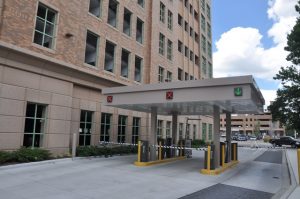 By David W. Burr
By David W. Burr
The Coronavirus crisis has thrown our lives into disarray and has shaken up our industry. While the economic impact will linger, the public health crisis will likely pass in a matter of weeks. But even as it passes, it will be important that we as an industry learn from this crisis. This pandemic provides a stark reminder that people are susceptible to illness, and we should endeavor to find ways to minimize the risk.
The parking process exposes people to many common touchpoints, forcing drivers to touch surfaces that others (often many others) have already touched. This is how illness spreads, and as we are learning during this pandemic, viruses can live for several days on surfaces. This is an important issue, not just now, but in normal times too. We are constantly coming into contact with flu and cold viruses as well as many types of bacteria. Perhaps we can reduce this risk within parking facilities.
As a parking facility designer, I’ve always considered safety to be one of the most important design elements. Until recently, though, these types of healthcare issues weren’t part of the equation. So, the question is, how can we reduce the risk of viruses being introduced to high-use surfaces with the structure?
Technology can play an important role. There are a number of technologies already in use that can reduce touchpoints. Perhaps the most common and useful are frictionless parking suites that use LPR to recognize a vehicle as it enters and exits, and automatically bill the driver’s credit card. These suites eliminate the need to stop and pull a ticket or physically pay at exits. These suites can be installed during a garage’s initial development, or as part of a retrofit.
There are also technologies that allow parkers to reserve a space and pre-pay before they leave the house or use their cell phones to pay while they are at the parking facility. Pre-booking and mobile payment platforms don’t just promote public health, but they also make parking more convenient and they don’t cost owners a penny to offer.
From a design point of view, the most common touchpoints are in elevators and elevator towers, stairways, and door handles. It’s difficult to eliminate these types of touchpoints since people need to push elevator buttons, use railings as they climb stairs, and open doors. However, there are materials, such as copper, that actually kill viruses and bacteria. Perhaps we should start sheathing touchpoints like stair railings, door handles, and even elevator buttons with copper. While copper is more expensive to use than stainless steel or plastic, the public health benefits may make it worth taking on the cost.
The Coronavirus crisis has disrupted our lives, but hopefully, it is also making us look at parking in new, more creative ways. Ultimately, even when this crisis is over, these types of solutions will continue to provide public health benefits.
David W. Burr is parking planning director with Rich & Associates.
